Review for Star Trek: Lower Decks - Season One
Introduction
It’s annoying how free things can cost me money, although that’s more evidence of my lack of self-control than anything else. I accidentally clicked on a free trial of Amazon Prime, and I wound up enjoying new Star Trek for the first time in decades, enough to have me salivating for new Blu-rays. It’s not a universal like as it once was; I have learnt enough after this time to be selective. Given my love of the original series, it’s no surprise that I was there front and centre on the day that Strange New Worlds was released on Blu-ray. I wasn’t expecting to like an animation however, and a comedy at that.
I did once briefly give thought to what a Star Trek comedy might be like, inspired by a few episodes of Red Dwarf proving that a sci-fi comedy was not only possible, but desirable. I had the thought that there must be follow-up missions to the final frontier, following timorously in the footsteps of those that boldly go. It boiled down to a shipload of bureaucrats, visiting all the planets that the Enterprise had just discovered, paying reparations for all those megalomaniacal computers Kirk had talked into self-destructing, and dealing with all the child-support claims from the green alien women left behind. That is the least of what Lower Decks turns out to be.
Lower Decks follows the adventures of the USS Cerritos, focusing on the lower ranked crew, Beckett Mariner, Brad Boimler, Sam Rutherford, and D’Vana Tendi, who do the important drudge work of Starfleet while those higher up the command chain get all the credit and the glory.
10 episodes of Star Trek: Lower Decks Season 1 are presented across two Blu-ray discs from Paramount. Most of the extras are listed with the episodes.
Disc 1
1. Second Contact
The USS Cerritos is following up on a recently contacted planet, when the first officer gets an infection which spreads rapidly through the ship. Meanwhile, Ensign Brad Boimler is on a mission from the Captain to keep tabs on Ensign Beckett Mariner.
* Lower Decktionary: Joining Starfleet (6:21)
* Full Length Animatic (22:29)
* Deleted Animatic (1:02)
2. Envoys
Boimler thinks he’s got a cushy assignment transporting a Klingon to a diplomatic planet, but Beckett invites herself, and then the Klingon steals their shuttle. Meanwhile Rutherford tries transferring to a different department.
* Lower Decktionary: Aliens Among Us (7:31)
3. Temporal Edict
Buffer Time is a Starfleet tradition to pad out assignments, but one that Captain Freeman doesn’t agree with. The ship goes on an efficiency drive that overworks the crew to the point they start making mistakes. That’s not good on a diplomatic mission.
* Lower Decktionary: The Animation Process (8:09)
4. Moist Vessel
Captain Freeman has enough of Mariner’s attitude and assigns her all the worst jobs on the ship to get her to request a transfer, and when that doesn’t work, promotes her. All of this distracts from some ancient technology running amok.
* Lower Decktionary: The Main Titles (7:15)
* Deleted Animatics (1:18)
5. Cupid’s Errant Arrow
Boimler has a girlfriend, Lt. Barbara Brinson from the U.S.S. Vancouver. Knowing Brad, that’s something Mariner can’t believe. She’s convinced that Brinson is some kind of evil alien in disguise, and she’ll do what it takes to unmask her and save Brad.
* Lower Decktionary: Art Design (4:59)
Disc 2
6. Terminal Provocations
While the bridge crew are in the middle of a stand-off with an alien ship over a piece of Starfleet salvage, below decks, Boimler and Mariner’s teammate, Ensign Fletcher’s lackadaisical approach to duty threatens the safety of the ship.
* Lower Decktionary; The Holodeck (6:31)
7. Much Ado About Boimler
Volunteering to test Rutherford’s transporter modification leaves Boimler out of phase, necessitating the intervention of Division 14. Meanwhile, with the Freeman on a secret mission, Mariner has to deal with a temporary captain on the Cerritos.
* Lower Decktionary: Division 14 (4:05)
8. Veritas
With the command crew imprisoned behind a force field, it falls to Boimler, Mariner, Tendi, and Rutherford to offer testimony in a trial. The only problem is that they are lower decks. They never know what’s going on.
* Lower Decktionary: Deck Dynamics (5:06)
9. Crisis Point
Mariner’s pulled off a successful mission, but Captain Freeman points out that she broke the Prime Directive doing so. It’s worse than the brig this time, it’s mandatory therapy. But Mariner thinks that the holodeck is more useful than a counsellor.
* Lower Decktionary: The Music of Lower Decks (6:19)
* Crisis Point: The Rise of Vindicta Trailer (1:28)
10. No Small Parts
Mariner’s secret is out, and she can no longer bear being on the Cerritos. While waiting for a transfer to be approved, the ship gets a distress call from the USS Solvang. The Cerritos flies into more trouble than the crew can handle.
* Lower Decktionary: All in the Family (6:30)
Picture
Lower Decks gets a 1.78:1 widescreen 1080p transfer, which is clear, sharp, and colourful, with excellent detail, bringing the animation across smoothly and without issue. There isn’t even the spectre of digital banding to worry about, that I see on many anime Blu-rays. The character design is somewhat generic for US adult comedy animations. It has its own style to be sure, but it still conforms to an overall stereotype that I have been seeing since the year Simpsons. Where the show really does impress is the world design, really embodying that 24th Century Star Trek era where The Next Generation, Deep Space Nine, and Voyager reside. Costumes, ‘sets and locations’ and the technology will all be comfortably familiar if you’ve grown up with those aforementioned shows.
Sound
Lower Decks gets a DTS-HD MA 5.1 Surround English track with optional SDH English subtitles. I had no issues with the audio; the surround bringing the action and music across well, and with animation, the absence of mumbly actors is a godsend, with the dialogue clear and audible throughout. I find that US animation of this nature shares a common ‘voice’, fast paced delivery and familiar cadences across the medium, and in that way Lower Decks has a degree of comfort to it. The music takes a cue from the Berman era that inspired the show’s 24th Century look, and the orchestral feel really suits the show well, establishing it firmly as Trek with the opening credits (The TNG font doesn’t hurt either).
Extras
You get 2 discs in a BD Amaray style case with one held on a centrally hinged panel. It’s wrapped in an o-card slipcover that repeats the sleeve art and blurb. The inner sleeve has episode synopses and extras listings. The discs boot to animated menus where you get a Play All option, an episode listing, and subtitle options. The episode titles in the listing open up a sub-menu where you can see the extras listed with that particular episode, as I’ve mentioned above.
Disc 1 autoplays with a trailer for Picard Season 1.
The extras separate from the episodes on disc 2 comprise...
Faces of the Fleet (24:43)
Hiding in Plain Sight (7:39)
Conclusion
I went on quite the journey with Star Trek: Lower Decks Season 1. I came at it with expectations of something akin to a parody, a purely comic take on Star Trek which sends it up, albeit from a kind place. And as the end credits rolled on Episode 10... Lower Decks had become proper Star Trek for me, just as valid as any of the other series or movies (and in a couple of cases even more so). It doesn’t stop it from being a comedy though, even if it is one that works in the Star Trek universe. As the creator of the show notes in the extras, all Lower Decks does is switch the emphasis around. There are plenty of episodes in ‘dramatic’ Star Trek that have comedy elements, shows like The Trouble With Tribbles could and did play purely for laughs. Lower Decks is a Star Trek comedy show with dramatic elements, and the character development and story arcs are just as strong and as meaningful as in any other instalment of the franchise.
Lower Decks could never have worked in the days of the Original Series and The Next Generation, when the shows were constrained by being episodic, and not enamoured of narrative continuity. Lower Decks needs continuity. The characters are in some ways audience proxies. They are Star Trek fans, are constantly referencing previous adventures and other crews. The big joke and the driver of the conflict in the show (another verboten in The Next Generation) is that the majority of the crew are fans of The Next Generation era, with Brad Boimler the ultimate in anal retentive adherence to the regulations, while Beckett Mariner is a fan of the original series, and more idolises people like Kirk, who weren’t above bending a few rules to succeed. She is a 23rd Century square peg in a 24th Century round hole, and that makes for much of the show’s humour.
The hero ship, the Cerritos is a support ship, following up on the missions of the usual hero ships, doing the essential missions in the Federation which aren’t about exploration or glamour. The show balances life below decks with four ensigns, Mariner and Boimler, medical technician D’Vana Tendi, an Orion, and Samanthan Rutherford, an engineer who is new to being a cyborg. This is balanced with the command crew, Captain Carol Freeman; constantly infuriated by Mariner’s antics, but who for some reason can’t simply get rid of the wayward ensign, first officer Jack Ransom, a wannabe Riker with a Kirk approach to hand to hand combat, security chief Shaxs, a Bajoran who like all security chiefs is always denied the chance to fight, Chief Engineer Andy Billups, and Dr T’ana, a somewhat mangy Caitian.
You don’t really realise that the characters are being developed in the early episodes, as the comedy is so strongly focused on. It often feels like a cross between Red Dwarf and Futurama in the initial stories, which really work by revisiting tropes and even plot points established by the other Trek series, but opting to play them for laughs, or subverting them completely. Every Star Trek series has had an episode early on in their runs where the crew gets infected by an alien virus, and it becomes a race against time to find a cure. TOS and TNG had The Naked Time and The Naked Now, and DS9 had Babel, so the first episode has a zombie virus raging through the ship. And we get the first of many occurrences of Mariner’s malfeasance inadvertently saving the day.
In Star Trek III, Scotty makes a passing comment about exaggerating his repair estimates to appear like a miracle worker. That’s the basis of Buffer Time, which informs the story of the third episode. Starfleet ships also seem to always have problems with ancient alien technology, and that informs the fourth episode. It’s also where we get the acknowledgment that holodeck technology is used for really just one thing, when Mariner gets assigned the worst jobs on the ship, and winds up having to clean the holodecks. To this point, the references and callbacks fly thick and fast, and the sense that the show is a parody remains paramount.
The references never really go away, and it would be detrimental if they did, but from episode 5 onwards, the character development that happens in the background to this point, becomes more important in the stories. The personalities and interactions become bigger drivers of the narrative and it makes the stories even more interesting. You also get to hear more and more Trek alumni like J.G. Hertzler and Jeffrey Combs voicing characters on the show, but it isn’t until the final episodes in the season that we start to see familiar characters in animated form, beginning with an appearance of Q in the penultimate episode, and a newly promoted Captain Riker and Troi (Lower Decks is set just after Star Trek Nemesis in the timeline) in the season finale.
The episodes just keep getting better and better, until the penultimate episode, Crisis Point, which for me is a stroke of genius, the first 10/10 episode in the series. In it, Beckett Mariner’s approach to Starfleet gets her into even more trouble, but rather than sit with a Counsellor as ordered, she decides to vent her frustrations on the holodeck, re-writing Boimler’s promotion simulator into what is effectively a Star Trek movie. The aspect ratio shifts, lens flare is applied, and all the movie tropes and clichés are revisited. It starts off like The Wrath of Khan and ends like The Undiscovered Country, and I was laughing throughout.
The final episode begins with another callback, with the Cerritos revisiting Beta III, the Landru planet from the original series, where the inhabitants have fixed the psycho computer. But things get serious when they receive a distress call from a sister ship, and fly into a trap. The comedy is still there, with a TNG reference, an Exocomp crewmember with the bizarre name, Peanut Hamper. But the story gets pretty dark, and ends on a serious note, despite the Riker appearance. And somewhere on the way through these ten episodes, Lower Decks stops being a Star Trek parody, and becomes Star Trek full stop.
Lower Decks is a Star Trek show for the fans, by the fans, starring fans, and it works!
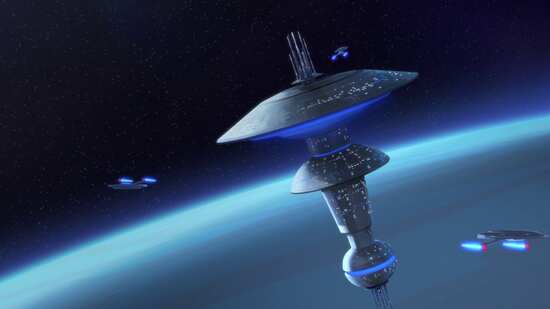
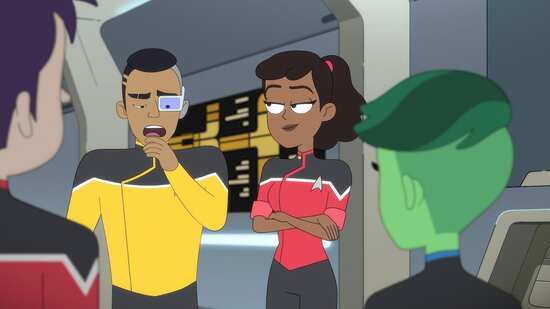
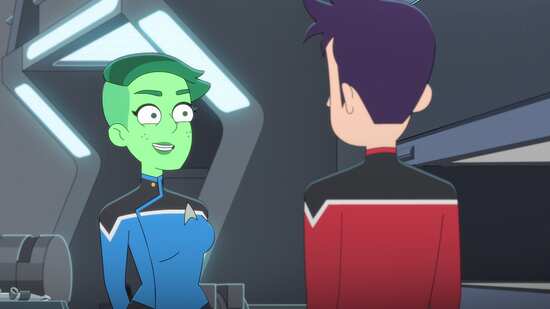
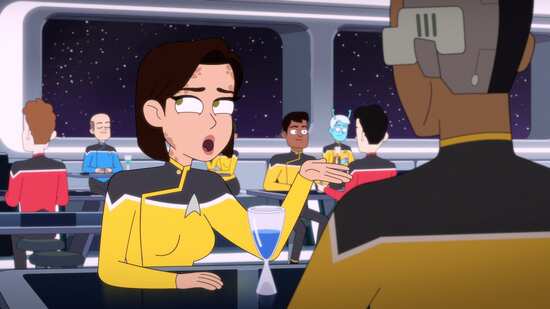
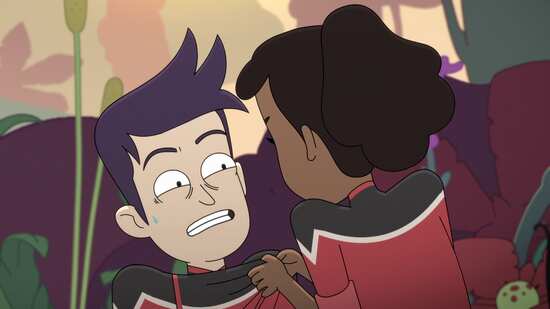
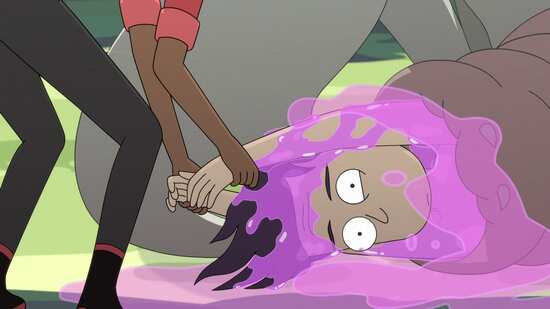
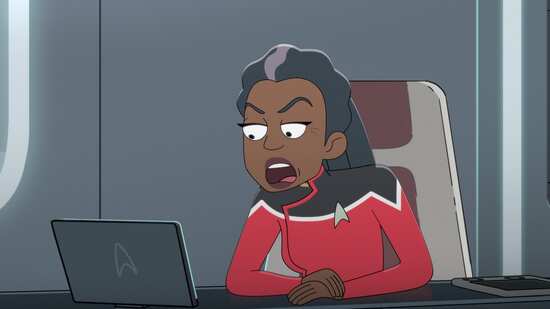
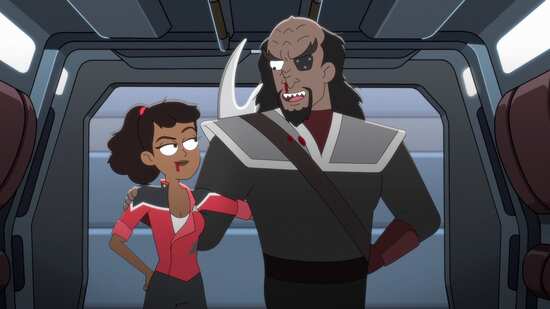
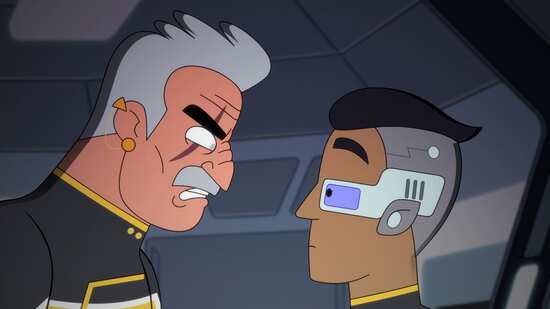
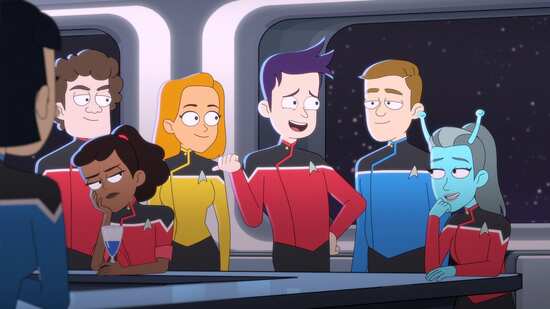


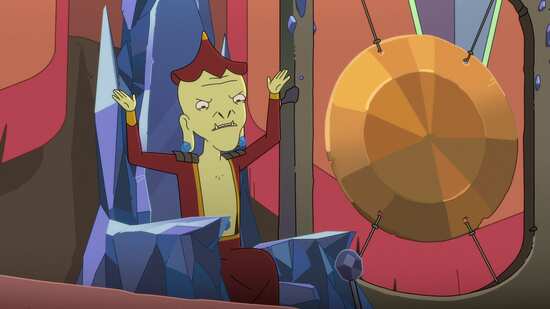
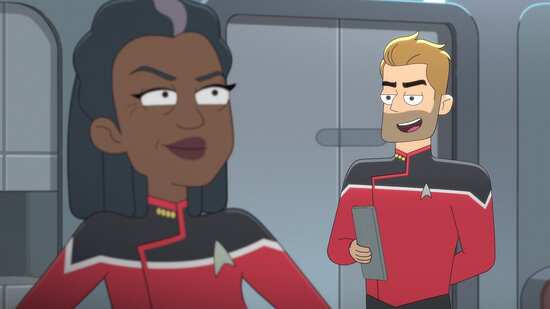
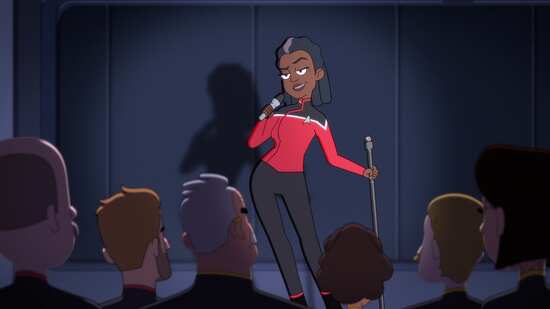

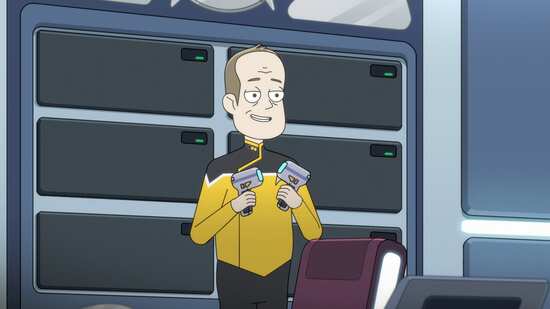
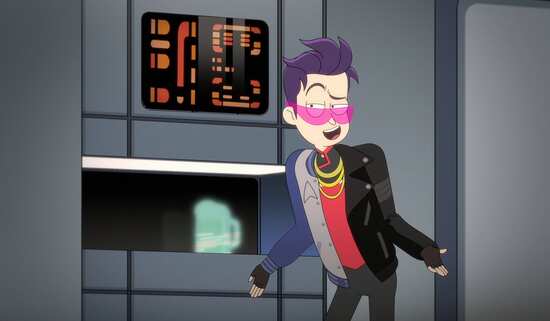
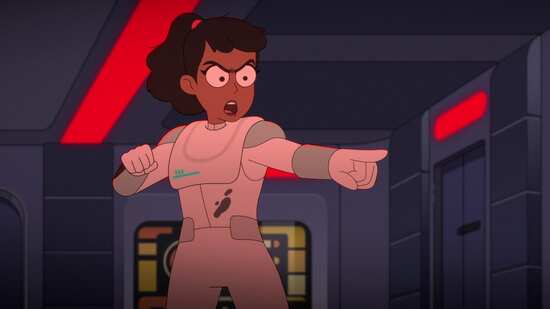
Your Opinions and Comments
Be the first to post a comment!